Bouldering is the youngest of the competition climbing sports, and brings with it a youthful expression of creative and movement.
We see the athletes solve multiple complex movement “puzzles” on a short 4.5m bouldering wall with various angles, from overhanging to slab. As the wall is not very high, Athletes do not use a rope for protection and instead rely on the foam crash pads below. Athletes get a set period to solve the puzzle and reach the top instead of a limit on the number of attempts. By limiting the time, athletes have to develop innovative solutions, with different athletes solving the same problem in various ways.
History of Competition Bouldering
Bouldering is the youngest of the three competition disciplines in climbing, joining the World Cup in 1999 after a series of test events, the Top Roc Challenge in 1998. Other bouldering competitions had occurred before 1998, specifically in the ski town of Val d’Isère, which hosted one of the best bouldering competitions1. Val d’Isère hosted the first Top Rock Challenge event in 1998 and the second World Cup in 1999.
Timeline
1998 - The Top Roc Challenge test event series was hosted in France, Italy and Switzerland.
1999 - The first Bouldering World Cup is held in Benasque (Spain).
2001 - Bouldering features in the UIAA World Championship in Winterthur (Switzerland) for the first time.
2004 - The first Melloblocoo competition is held in Val Masino on outdoor boulders. The event continues to this day.
2005 - Sport climbing (including bouldering) joins the World Games 2005 in Duisburg
2007 - The IFSC is formed and takes responsibility for competition climbing from the UIAA.
2008 - The IFSC reduce the number of qualification boulders from 6 to 5.
2017 - The IFSC changed the timing rules for the Boulder World Cup finals. Previously, athletes were allowed to finish their attempt if they were on the wall when the 4-minute timer went off (called four minutes plus timing). The new timing rules mandated a strict 4 minutes, with every attempt having to be completed within the 4 minutes to be successful.
2018 - The IFSC changed the scoring methodology for Bouldering. The intermediate hold for tie-breaking was renamed from bonus to zone. The scoring changed from breaking ties using attempts to top fist to the number of zone holds an athlete had controlled, which is the current scoring format. Athletes must also control the starting position and not just touch the start holds.
2019 - Janja Garnbret won the overall World Cup for the first time after winning every World Cup in the season.
2020 - No Bouldering World Cup competitions are held due to the COVID-19 pandemic.
2021 - Bouldering features as part of the Olympic combined format.
2023 - No-tex hand holds are used for the first time at the Bouldering World Championship in Bern.
2024 - Bouldering is combined with Lead as part of the Boulder&Lead combined format for the
Bouldering has evolved since it was first introduced, averaging 6 World Cups a season, maxing out with 11 in 2011 while having only 3 in 2002.
We have seen 153 World Cups hosted across 58 different locations across the 25 years, with Vail (USA) having hosted the highest number of events with 12 and Munich (Germany) just behind with 11, followed by Chongqing (China) with 8.
Who are the top athletes?
Across this time, we have seen 50 men and 32 women win Boulder World Cups. Kilian Fischhuber (Austria) has the highest number of gold medals for men, with 21.
| Athlete | Country | # World Cup Gold Medals |
|---|---|---|
| Kilian Fischhuber | Austria | 21 |
| Dmitrii Sharafutdinov | Russia | 12 |
| Jérôme Meyer | France | 11 |
| Adam Ondra | Czechia | 6 |
| Jan Hojer | Germany | 6 |
| Rustam Gelmanov | Russia | 6 |
| Tomoa Narasaki | Japan | 6 |
| Jongwon Chon | South Korea | 5 |
| Kokoro Fujii | Japan | 5 |
| Salavat Rakhmetov | Russia | 4 |
Fischhuber has won the overall season World Cup the most for men, with 5 titles in 2005, 2007, 2008, 2009 and 2011. He never won a World Championship, finishing second twice in 2005 and 2012.
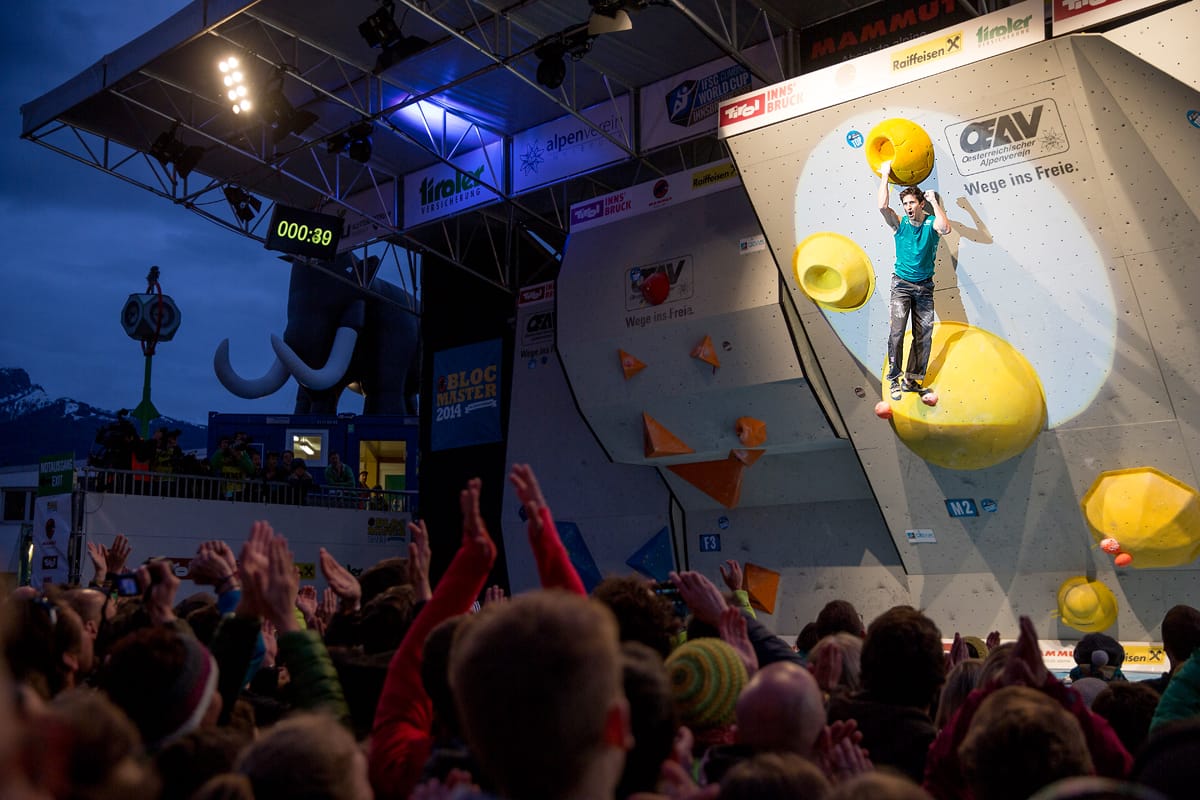
No other male athlete has dominated the Boulder World Cup circuit like Fischhuber. Dmitrii Sharafutdinov (Russia) is the next closest athlete with 12 Boulder World Cup gold medals between 2007 and 2014, though he only won the overall Boulder World Cup in 2013.
The only other athletes to win multiple overall Boulder World Cups are Jérôme Meyer (France), Christian Core (Italy), Tomoa Narasaki (Japan), Yoshiyuki Ogata (Japan), and Jong-won Chon. Meyer won three between 2001 and 2003, while Core, Narasaki, Ogata, and Chon have all won 2 overall World Cups.
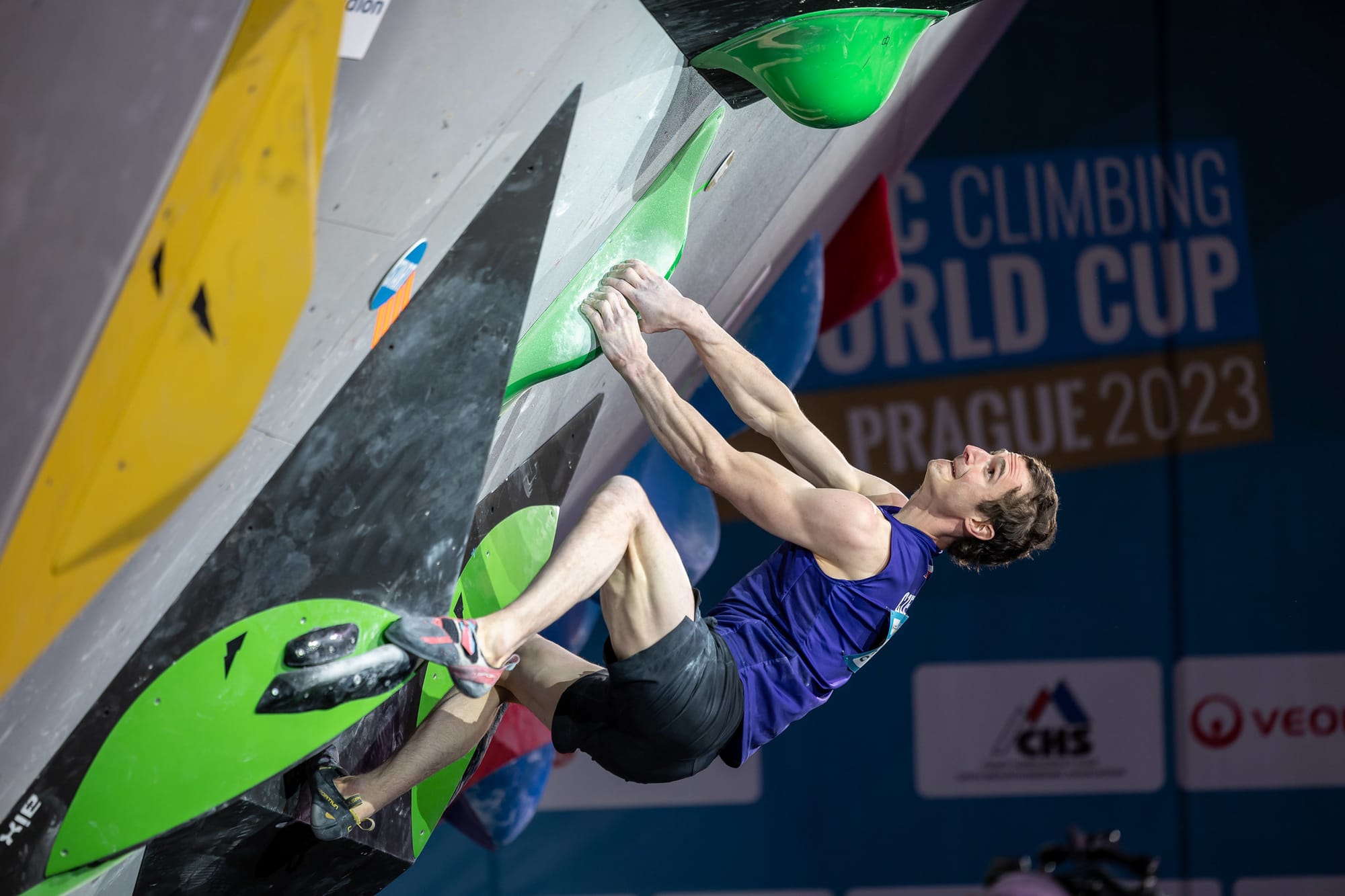
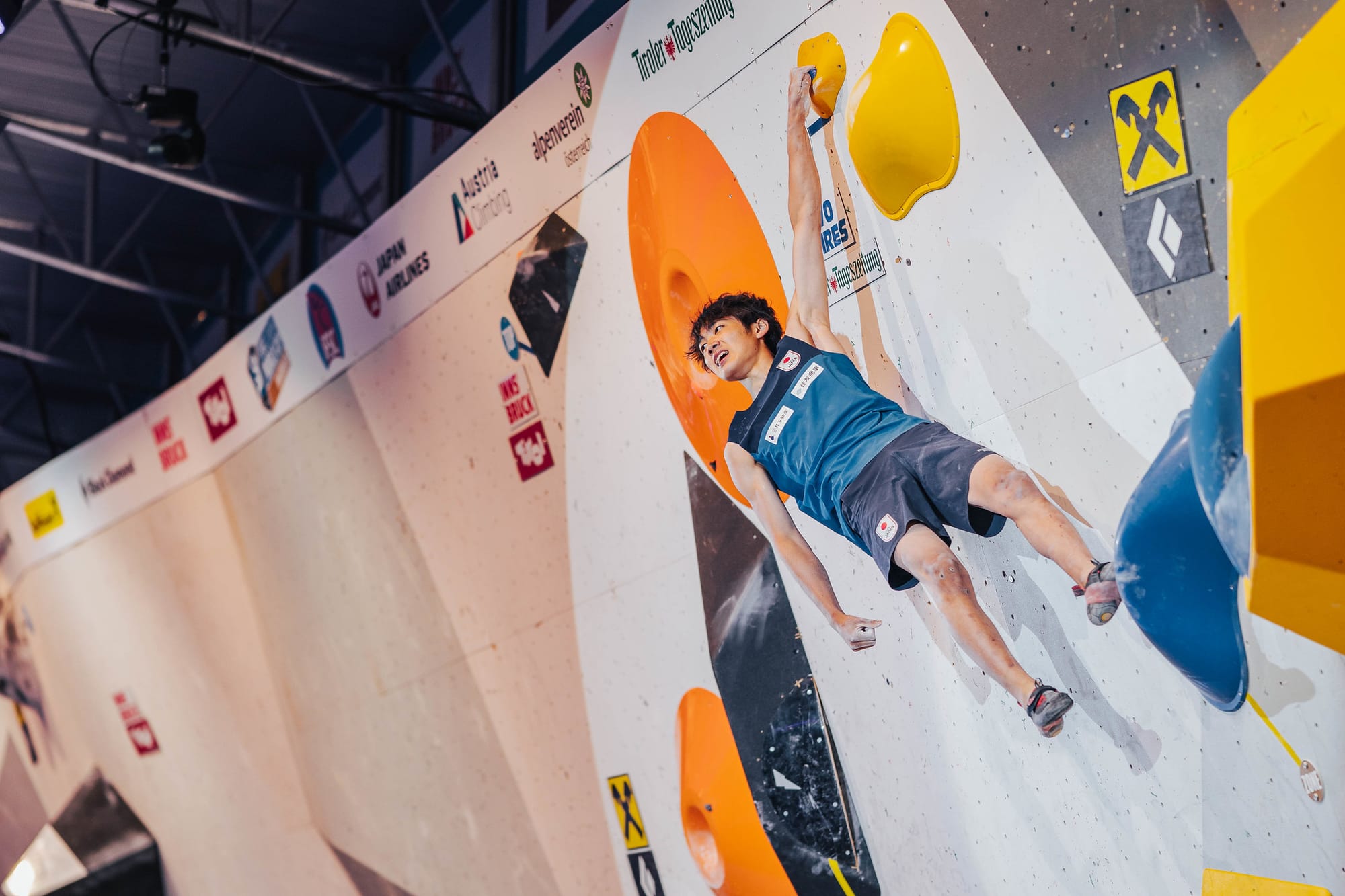
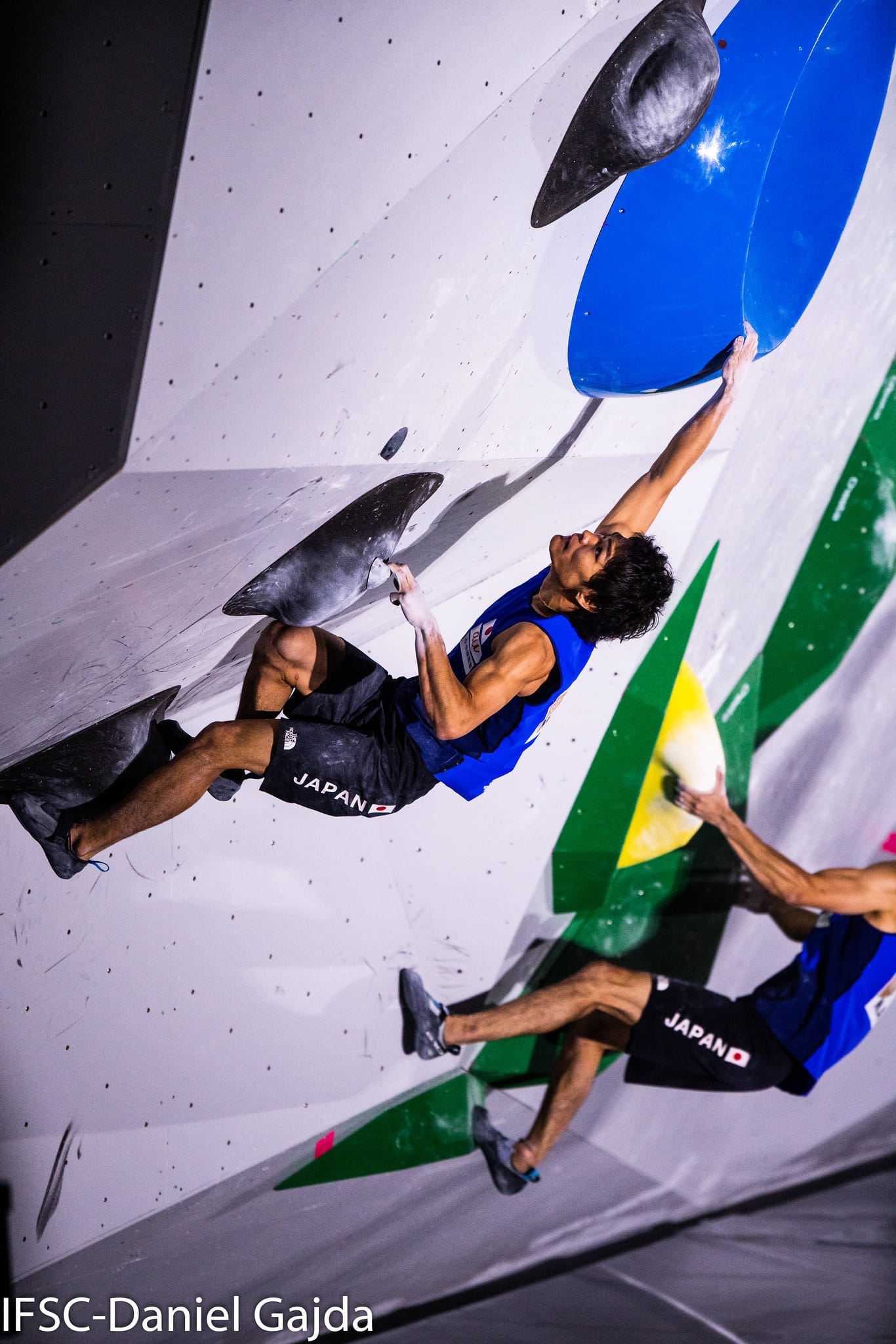
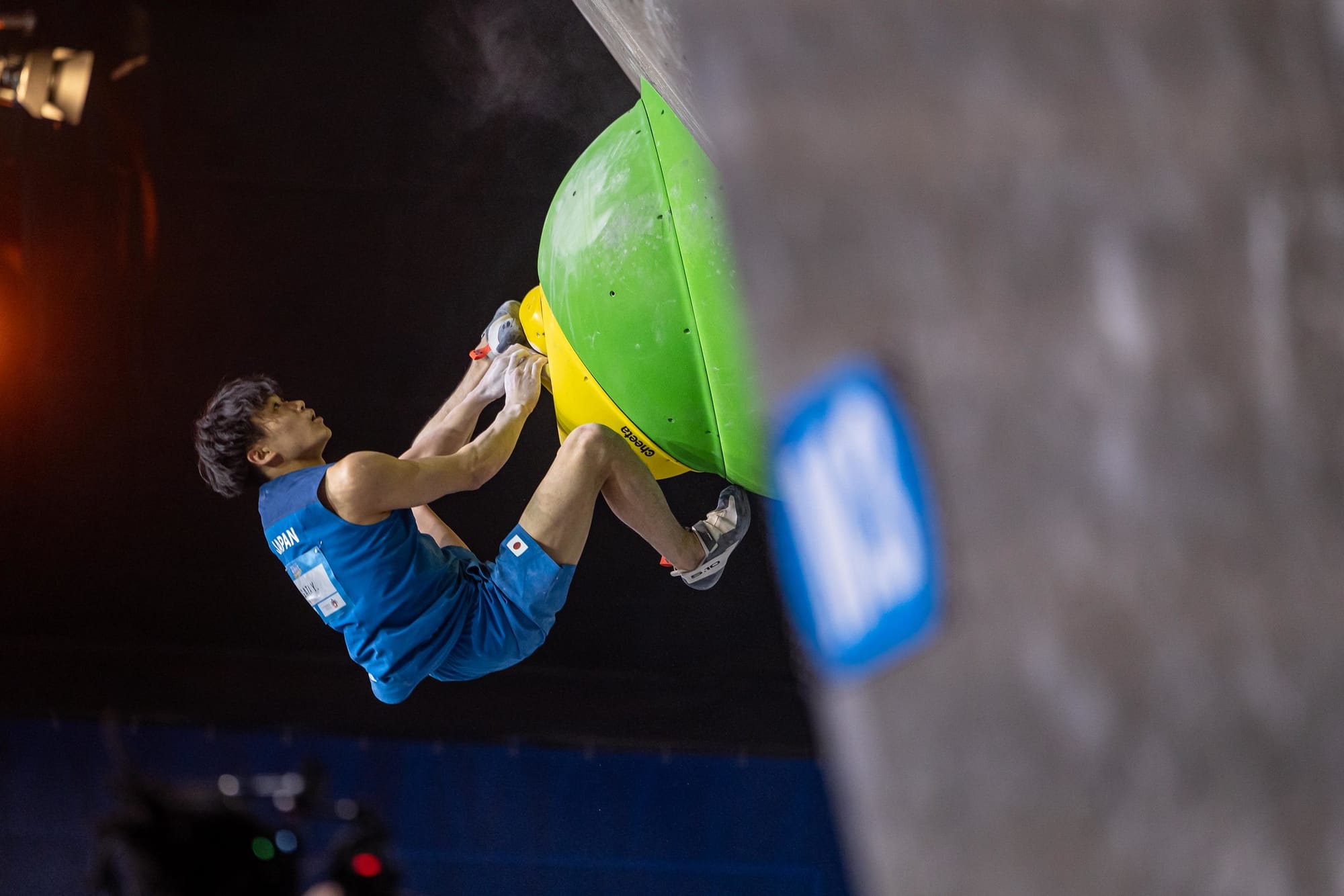
Clockwise from top left: Adam Ondra, Sorato Anraku, Tomoa Narasaki and Yoshiyuki Ogata © IFSC / Jan Virt, Lena Drapella, Daniel Gajda, Jan Virt
In 2023, Sorato Anraku (Japan) won the overall Boulder World Cup and the overall Lead World Cup, becoming the first athlete to achieve this, male or female.
| Athlete | Country | # World Cup Gold Medals |
|---|---|---|
| Anna Stöhr | Austria | 22 |
| Akiyo Noguchi | Japan | 21 |
| Sandrine Levet | France | 17 |
| Janja Garnbret | Slovenia | 15 |
| Shauna Coxsey | United Kingdon | 11 |
| Natalia Grossman | USA | 9 |
| Olga Bibik | Russia | 6 |
| Elena Choumilova | Russia | 5 |
| Juliette Danion | France | 5 |
| Miho Nonaka | Japan | 4 |
Sandrine Levet (France) has the most overall World Cup titles for women with 5 titles. Levet dominated the early 2000s before climbing competitions were officially televised, winning in 2000,2001, 2003,2004,2005. She also did well in Lead, winning 5 lead gold medals. Levet has the second-highest number of World Cup gold medals after Janja Garnbret (Slovenia).
The next big rivalry in the women’s bouldering field was between Anna Stöhr (Austria) and Akiyo Noguchi (Japan) between 2008 and 2015, where they shared the overall titles, each winning the overall title 4 times. Stöhr has won the most World Cup gold medals for female athletes with 22, and Noguchi is close behind with 21
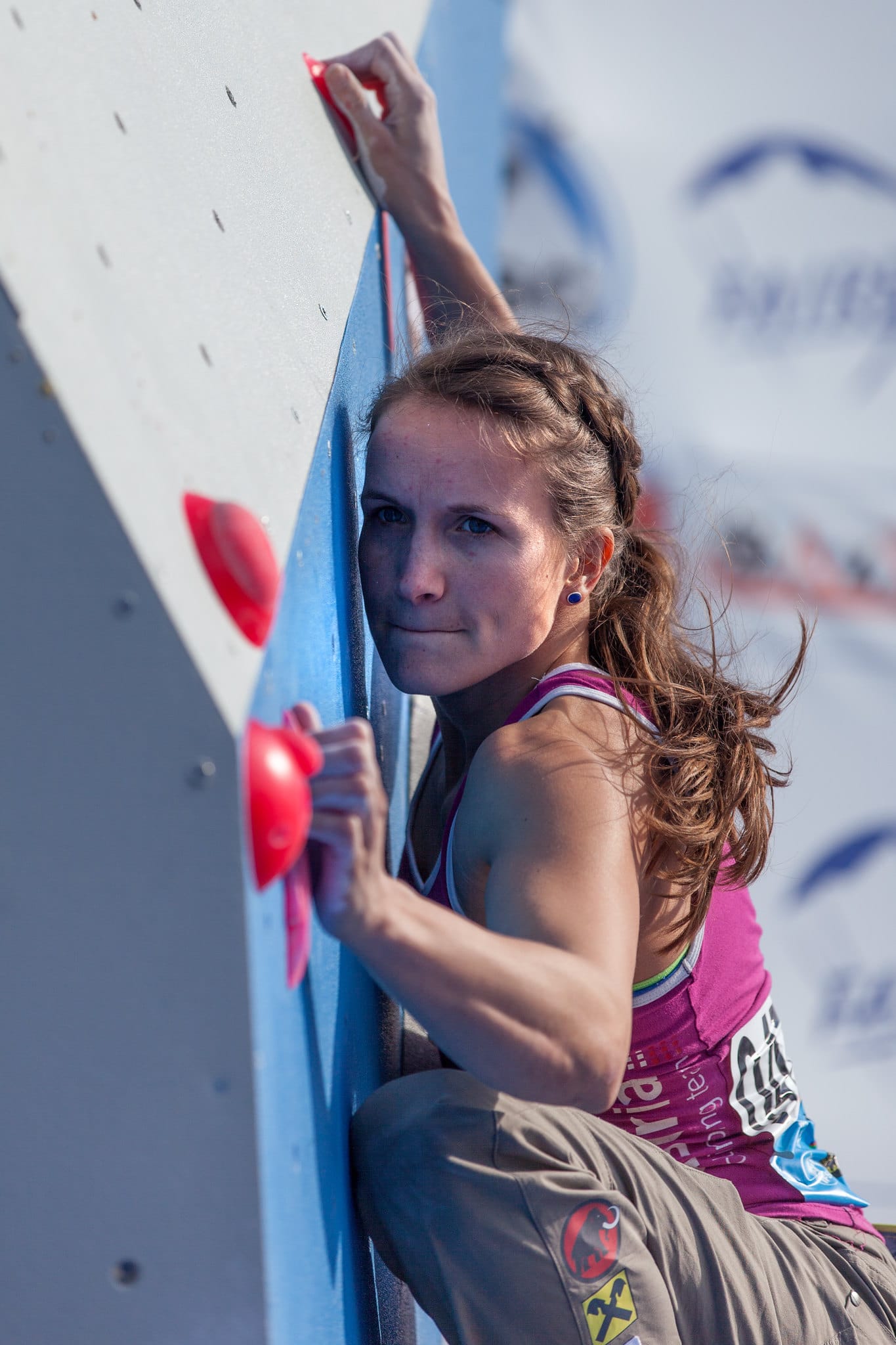
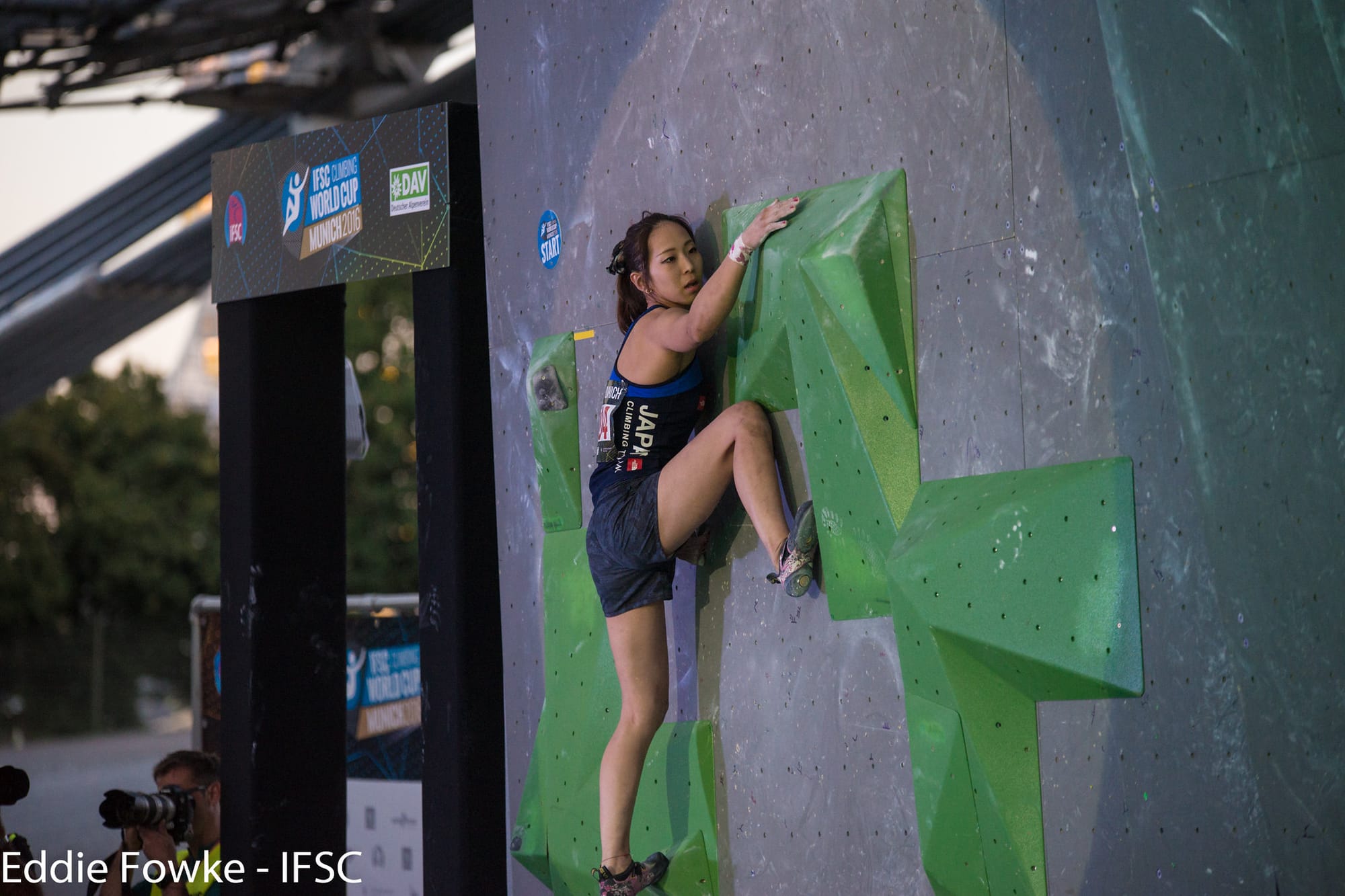
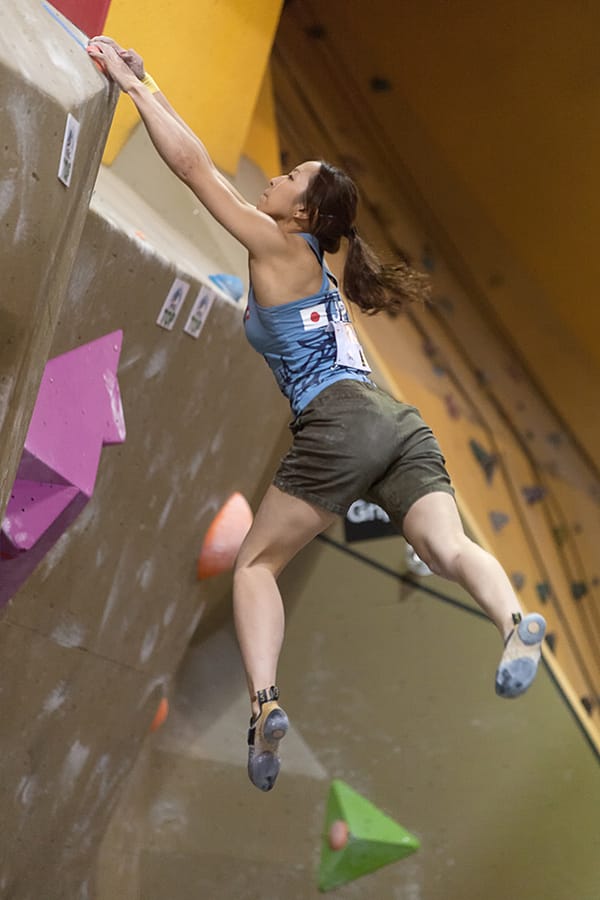
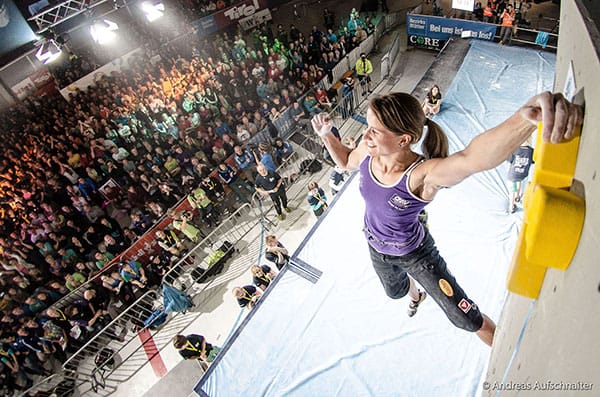
Anna Stöhr top left and bottom right. Akiyo Noguchi Top right and bottom left. ©IFSC / Heiko Wilhelm, Eddie Fowke, Heiko Wilhelm, & Andreas Aufschnaiter
Stöhr and Noguchi were so closely matched at times that they shared the Hall 2009 World Cup gold medal where both were tied after the semi-final, finals and even a super final boulder, which both flashed.
Garnbret is third with 18 gold medals, though she has only won the overall Boulder World Cup once in 2019. Garnbret’s win in 2019 was spectacular as she won all six Boulder World Cups in the 2019 season. Anna Stöhr came close in 2013, winning 7 World Cups out of the 8. She lost the eighth to Jule Wurn by just one attempt in Innsbruck.
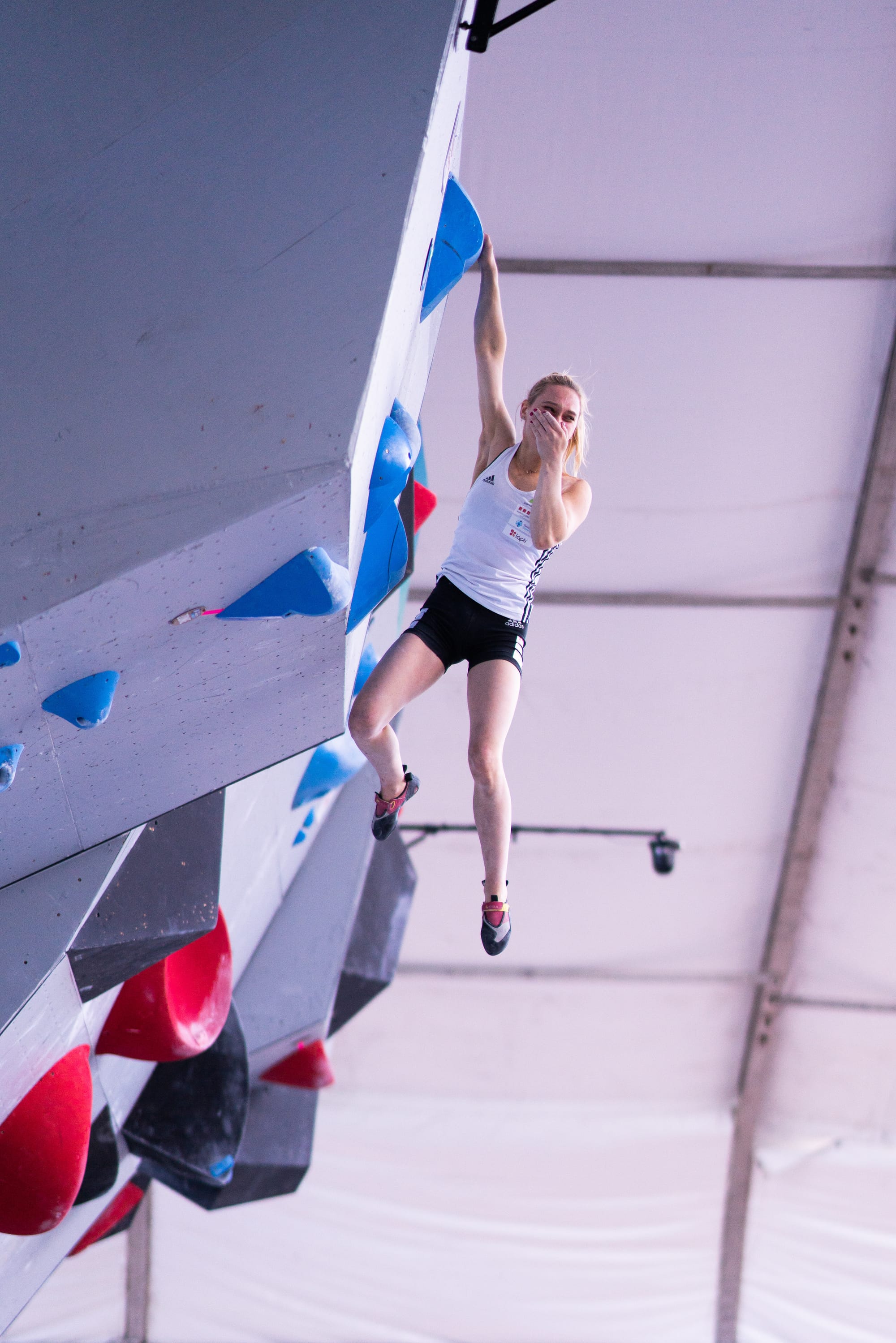
Natalia Grossman is the most recent athlete to dominate the Boulder World Cup season, winning in 2021, 2022 and 2023 and winning 6 gold medals. She also won the 2021 World Championship, becoming one of only five women to win a Boulder World Championship and the overall Boulder Cup.
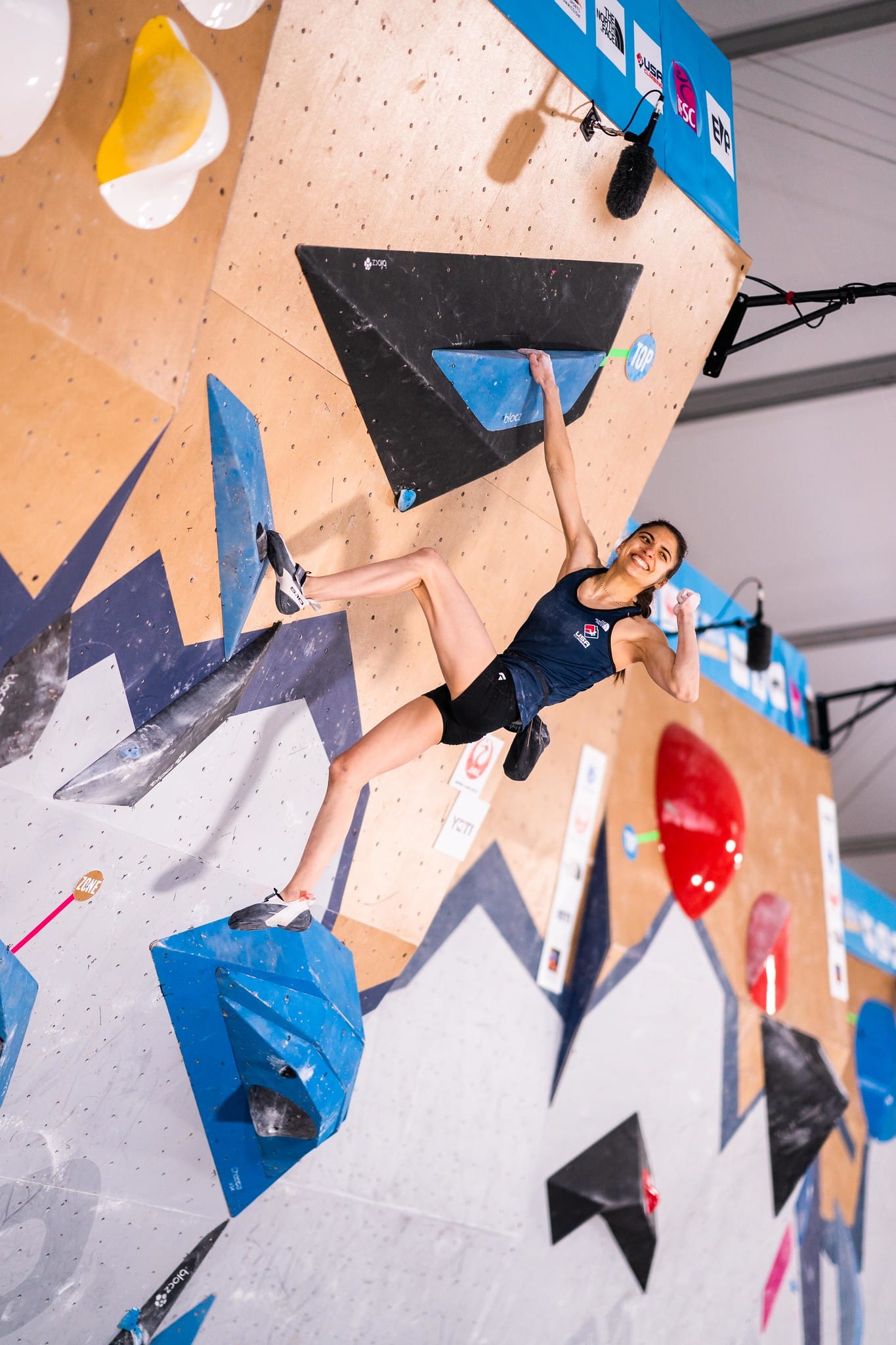
World Cup Scoring Rules
The World Cup format has remained fairly static since the IFSC took over running competition climbing in 2007.
Athletes are challenged across the five boulders in qualification, 4 boulders in semi-finals (if more than 20 people are competing), and 4 boulders in finals. In qualification and semi-finals, they have 5 minutes to attempt each boulder and 5 minutes of rest time. In the finals, athletes have only 4 minutes to attempt the boulders, but they have 2 minutes of observation time per boulder with their competitors before the round starts. The semi-finals are made up of the top 20 athletes from qualification. The final is made up of the top 6 from the semi-final.
Originally, qualification and semi-finals were treated as pure onsight; now, there is the option for the competition to place a picture of each boulder in qualification and semi-finals in isolation for athletes to study. This is to account for the difficulty of keeping all of the boulders secret while setting and putting up the boulders for each round.
Each athlete scores points for controlling the top hold and the zone, previously bonus, hold which is part way up the boulder. Athletes need to hold each control the zone holds to register the score. From the judging rulebook rule 3.3
The Zone Hold will be considered as “Controlled”, where a competitor has made use of the volume/hold to achieve or change a stable body position.
Where a competitor has only reached out to touch the Zone Hold from an already controlled position and made no use of the volume/hold to achieve a new controlled position, the Zone Hold will not be considered as “Controlled”.
Athletes are then ranked based on the number of tops. The following are then used to break ties, in the following order (as of 2024)
- Maximum number of zones
- Minimum number of attempts to top
- Minimum number of attempts to reach the zone
All of the scoring values are compressed into a compressed notation, where the notation breaks down as
(# of tops)T (# of zones)Z (# of attempts to top) (# of attempts to zone)
For example, below are five climbers’ scores. The number of tops separates 1 and 2, and the number of zones separates 2 and 3. The number of attempts to top separates 3 and 4, while the number of attempts to zone separates 4 and 5.
| 1 | 2 | 3 | 4 | 5 |
|---|---|---|---|---|
| 4T 4Z 4 4 | 3T 4Z 5 4 | 3T 3Z 3 3 | 3T 3Z 5 5 | 3T 3Z 5 8 |
To denote the start holds, the tape is used with one piece for each limb with no direction over which limb has to go where. But this was not always the case. In 1998, before Bouldering joined the World Cups, the route setters intentionally set1 a boulder at the Top Roc Challenge’s Valloire(France) stage to force the athletes to start facing the crowd. To force this, they added LEFT and RIGHT instructions on the tape to force athletes to adopt the position.
Countries can appeal scoring decisions made for both their athletes and other countries. Only official footage, and sometimes the IFSC broadcast, can be used to dispute appeals. An unsuccessful appeal costs the country €150 in 2023 per appeal.
Other formats for boulder competitions
While the IFSC World Cup is a standard format, other competitions have experimented with how else a boulder competition can be run.
Many local and large open competitions feature a “scramble” format where climbers of all genders compete on the same boulders and gain points for each climb to the top, with the maximum points for a flash and a few points for a top on subsequent attempts. The Climbing Works International Festival, Studio Bloc Masters and Dockmasters competitions work this way for the open category qualification round. All three then revert to an IFSC-style World Cup competition for semi-finals and finals. In 2023, Dockmasters used the four-minute plus time limit for the finals.
USA Climbing has tried out more complex scoring to reward athletes for progress made on climbs. Athletes get points for each (up to three) zone holds and the top. Athletes lose 0.1 points per attempt.
The new Boulder&Lead format for the combined format adds a second zone to the boulders and uses a points system. The IFSC explicitly requires route setters to set a variety of different styles for Boulder&Lead across a round and favour power over pure finger strength when setting boulders.
The Addidas Rockstars competitions also innovated the format for competitions, with athletes getting knocked out after 2 and 3 boulders in the final before it came down to the last two athletes to race to the top.
Another competition that has experimented with a very different format is the La Sportiva Legend’s only competition organized by Bjorn Pohl. Five or six athletes are invited and attempt problems that are very difficult (F8B-8C). The competition is a redpoint format with athletes able to work four of the five problems during a session two days before the competition. On the day of the competition, each athlete gets three attempts to top each problem, except for the last problem. Except for the last problem, there is no isolation, so the athletes can watch and cheer for each other. For the final problem, athletes have 3 minutes plus to send the climb and climb
The most innovative competition series is the Boulder Field Master Series held at The Boulder Field in 2019 and 2023. The series is made up of 3 different formats:
- The Greatest Flasher: The open competition features 10 climbs in qualification and finals, where each athlete only has 1 attempt per boulder. The top 6 move on to the final competition. The athlete who flashes the most problems wins.
- The Force Majeure: This format is a redpoint competition where athletes get as many attempts to send the boulders as they like in a fixed time period: 3 hours for qualification and 1 hour for the finals round. All climbers are out and can attempt the boulders together and have 10 minutes to preview. There are 10 boulders in the qualification and 6 in the final.
- The Modern Climber: The qualification is the same format as The Force Majure, but the finals feature a new “Level” format where athletes must complete each climb to advance to the next one. The winner is the athlete to top the last climb first. There are 5 climbs in the final, and athletes attempt the first boulder in the order of qualification. There is a 1-hour time limit for the round.
- More Keys to Route Setting by Jacky Godeffe, 2022 ↩︎





